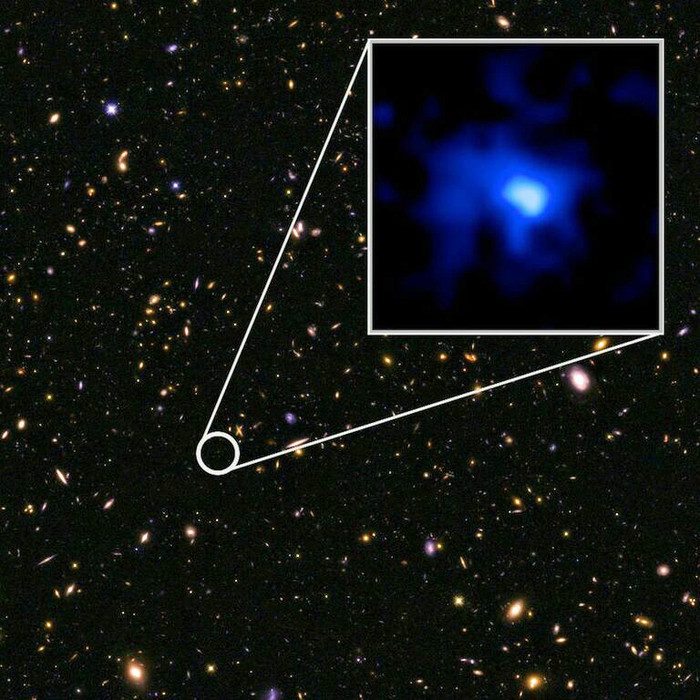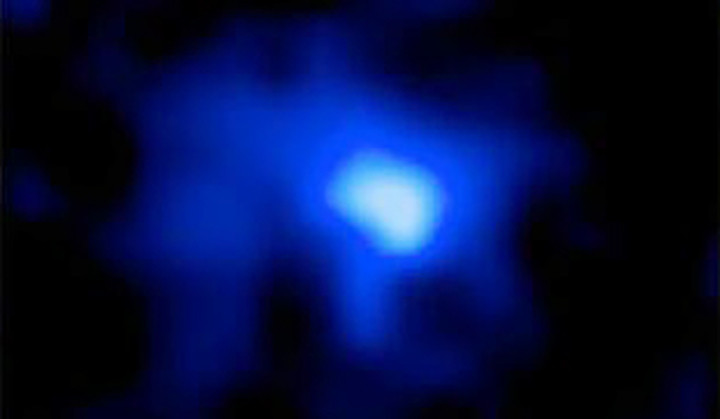Fast-forming galaxy sitting 13.1 billion light years away is farthest ever discovered

Astronomers have discovered the farthest known galaxy, EGS-zs8-1, sitting 13 billion years in the past, when the universe was just 5% of its present age.
The exceptionally luminous galaxy was discovered using the W M Keck Observatory's 10m telescope in Hawaii.
It was originally identified because of its particular colours in images returned from the Hubble and Spitzer telescopes – it is one of the brightest and biggest objects in the early universe.
Light takes time to travel – what we see from the sun takes eight minutes to reach us, for example. When the light is coming from extremely distant galaxies, it has to travel billions of years to reach us, so astronomers are observing what those galaxies looked like billions of years ago.
Scientists from Yale University and the University of California-Santa Cruz say EGS-zs8-1 is forming extremely fast, making stars at a rate about 80 times faster than the Milky Way.

Pascal Oesch, lead author of the study published in Astrophysical Journal Letters, said: "It has already built more than 15% of the mass of our own Milky Way today. But it had only 670 million years to do so. The universe was still very young then."
Pieter van Dokkum said the distances of just a handful of galaxies have been measured from the early universe and their findings add "another piece to the puzzle" of how these first generation galaxies formed.
Scientist say the findings confirm massive galaxies already existed in the early universe and that they had different physical properties compared to what we see around us today.
The latest observations are from a time when the universe was going through a big change – the hydrogen between the galaxies was going from a neutral state to an ionized one.
"It appears that the young stars in the early galaxies like EGS-zs8-1 were the main drivers for this transition, called reionization," said study co-author Rychard Bouwens.
© Copyright IBTimes 2025. All rights reserved.






















